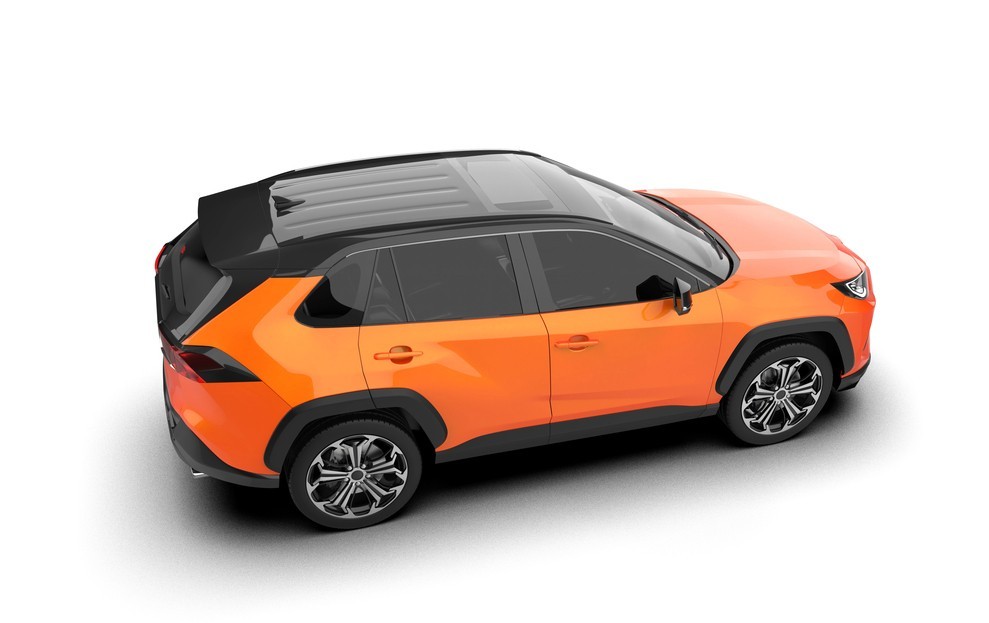The all-new 2026 Toyota RAV4 – First Look
Valerie Raskovic

Toyota made headlines when they announced they were going to be dropping the purely gasoline version of the world’s best-selling SUV for the 2026 model year. As a leading manufacturer of hybrid vehicles, Toyota has been able to fine-tune and perfect gas-hybrid technology over the years. With the widespread success of the Toyota Prius and brought the resulting adaptation of hybrid vehicle technology, Toyota was able to see the writing on the wall. At the current time, the majority of consumers are more likely to buy an electric- gas hybrid than a fully electric vehicle. While the hybrid-only drivetrain may be a deal killer for some buyers it is a very strong selling point for the majority of buyers, in the market for a crossover SUV.
Every 2026 Rav4—LE, XLE, Woodland, Adventure, Limited, and the returning TRD Off-Road—ships with the fifth-generation Toyota Hybrid System (THS 5). A 2.5-liter Atkinson-cycle four still does the heavy lifting, but it’s now paired with a more compact lithium-ion traction battery mounted under the rear seat.
Front-wheel drive is standard; three electric motors (the rear unit is now oil-cooled) give optional electronic on-demand AWD. Combined output climbs modestly to 225 hp (FWD) or 235 hp (AWD), yet Toyota is quoting a 15 % improvement in EPA-combined fuel economy—think 44–46 mpg for most trims.
While the car maintains its overall rugged design language, it was refreshed with new fascia and body panels. A hammerhead nose design coupled with thinner LED light blades and 0.4 inch more ground clearance on Woodland and TRD trim models. Inside, Toyota’s new 12.3-inch floating display runs the latest Audio Multimedia (built on Google’s AAOS but with wireless CarPlay/Android Auto), and every RAV-4 gets Toyota Safety Sense 4.0 with hands-free traffic-jam assist.
Positives
There are many positives to the Toyota’s hybrid platform.
- Fuel Efficiency: Averaging in the 40s mpg with the combination of city and highway driving, it means you’ll burn hundreds fewer gallons over five years than any gasoline-only rival.
- No “hybrid tax”: Toyota priced the all-new 2026 hybrid model at the same price as the previous generation gas model. The MSRP for an AWD LE model starts at just $30,850.
- Improvement in Tow Capability: The new AWD hybrid RAV-4 can tow up to 3,500 lb. That is a 500 lb increase from the outgoing model. This improvement can be attributed to a stronger rear electric motor and improved battery cooling.
- Decreasing the carbon footprint: The new model is kinder to our planet. With a lighter lithium-ion battery pack, it reduces the nickel metal by 79 % from the previous hybrid option model. Nickel mining can be very harmful to the environment as well as human health. Reducing this material in the car’s battery pack can help to decrease water and soil pollution, reducing each hybrid vehicle’s carbon footprint as much as 15 %.
- Quieter cabin: New laminated front glass and engine-mount redesign cut 2 dB of drivetrain boom at 60 mph.
- Strong Resale History: RAV-4 Hybrids have held value better than any mainstream-brand crossover the last five years (KBB data), making the car an ideal choice for budget-minded consumers.
Negatives
- Hybrid complexity anxiety: More motors, inverters and a lithium-ion pack mean potentially higher post-warranty repair costs. Keep in mind a lot of third-party mechanic shops are turned off by hybrid car complexity and difficulty to diagnose and shy away from vehicles containing high-voltage batteries.
- Increased maintenance cost: While Toyota continues to produce the most reliable vehicle sold in the US, it should go without saying that the more systems the car has, the more problems it may encounter. Having essentially 2 separate drivetrains further exacerbates this problem with additional maintenance and repairs required for multiple systems.
- CVT Transmission drone: While Toyota makes the most reliable Continuously Variable Transmissions (CVT) on the market, they are not immune from some of the common CVT complaints. Despite extra sound insulation, hard acceleration still introduces some undesirable noise pollution into the cabin.
- Touch-slider HVAC Controls: While the new RAV-4 does still have mechanical buttons for temperature adjustments, some buyers will be put off by the haptic sliders and touch screen controls integrating HVAC functions such as heated seats, fan speed and vent selection. The most common complaint from real car owners revolves around the fact that those HVAC features are nearly impossible to operate while wearing gloves.
- Dealer gouging: Early units are already carrying $2–3K “market adjustments” in high-demand regions; Toyota can’t build enough lithium-ion packs to satisfy global demand.
Bottom line
If you’re shopping for a mainstream compact crossover in 2026, you’ll be hard-pressed to beat the RAV-4 Hybrid’s operating cost, resale and reliability reputation. You will just need to accept the fact that the RAV-4 will only be available as a hybrid. If that is a deal killer for you, then there are other good options, including the RAV4’s top competitor, the Honda CRV.
Read more articles

